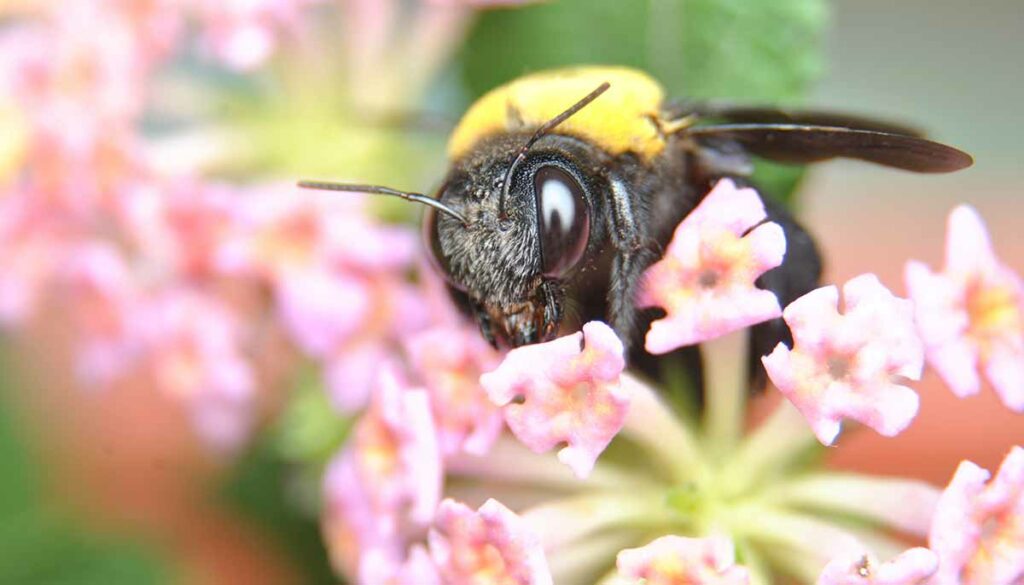By now, you’re likely aware of how important bees and other pollinators are. Not only do food crops depend on them, but other flowering plants and trees need pollinators to survive, too.
They are also on the decline in some regions. From habitat loss to the overuse of pesticides, our bee friends need our help!
We can do our part to help keep these pollinators well-fed by growing a variety of bee-friendly flowering plants to keep bees coming back year after year. It’s time to create a buzz and plant some blooming beauties! But how do you know what to plant?
What Bees Are Looking For
Different types of bees prefer different flowers over others, for a variety of reasons.
Native plants: Bees usually prefer native plants above all else. This is good news for gardeners; natives are usually low-maintenance because they are adapted to your region. However, it’s best to avoid cultivars and “nativars” — a fancy term for cultivars that come from native plants. These are not as attractive or even as useful to bees as original species. Many have lost the fragrance that attracts bees. They often don’t have the pollen, nectar, and flower shapes needed by pollinators, either.

Flower shapes: Plant a mix of different flower shapes and sizes to attract a variety of bees. This might sound obvious, but small bees prefer small flowers, while large bees prefer larger flowers. There is more to it, though. Did you know that some bees prefer certain flower shapes because of their tongues? While some bees have long tongues that can easily get nectar in tubular blooms, others have short tongues and prefer flowers with easily accessible nectar.
Bloom colors: Bees can’t actually see the color red! They see flowers in the blue and purple color spectrum better than other colors, so they are naturally more attracted to blue-hued blooms. Interestingly enough, blooms in the purple-blue range tend to produce high volumes of nectar. Bees can also see ultraviolet light, and many patterns on flowers are invisible to humans. These are like ultraviolet bullseyes that guide bees right to their sweet treats.
Most importantly: Bees need chemical-free flowers. Never treat your flowers with pesticides because they are toxic to bees and other beneficial insects. It’s also important to avoid buying plants that are pretreated with systemic chemicals. Those systemic insecticides can make the whole plant harmful, including the nectar and pollen.
Blooms to Attract Pollinators
Bee-friendly flowers: Bees will thank you for planting alyssum, zinnias, verbena, salvia, coneflowers, catmint, asters, allium, and daisies. Some of these will even produce blooms all season long. And while you’re at it, plant the aptly-named bee balm, which will entice bees and other pollinators with dense clusters of flowers and aromatic leaves.

Herbs: Let your culinary herbs pull double duty. Many pollinators, bees especially, are drawn to herbs because of their intense scents. When you add herbs like lavender, basil, chives, thyme, rosemary, and mint throughout the vegetable garden, let some of them go to flower. This will help bring in the bees to pollinate your other plants.
Ditch the manicured lawn: I know that perfectly-manicured lawns of hard-to-please grass look crisp, but beneficial bee lawns are in. Let Dutch white clover, native violets, purple deadnettle, creeping thyme, and dandelions peek through your grass.
Blooms for Every Season
We often think about spring and summer when we are planting flowers for bees, but some bees need pollen and nectar earlier and later than that. Early-emerging bees need blooms from late winter into early spring. Other bees need late-blooming plants in the fall so they can prepare for winter hibernation. It’s best to plant a variety of flowers that include early- and late-season blooms.
Early bloomers: Planting flowers like crocuses, hyacinths, dianthus, and primrose will help those early-emerging bees. Pansies love cool weather, so they’re also a great choice. And if you really want a bee-friendly garden, let those dandelions bloom! You don’t have to stick to just small plants, either. Willows, redbud, and maple trees are early blooming trees.
Late bloomers: After most blooms are spent, late bloomers can save the day for bees preparing for winter hibernation. Dahlias, sunflowers, asters, goldenrods, and viburnum shrubs will keep the pollen and nectar coming.













